The Peace Corps in the Time of Trump, Part 4
The 70s decade produced a series of ETDs — Early Termination Directors. These were Directors who couldn’t hold the position for as long as a PCV’s tour of service. They came and they went from the agency, then they used the ‘good name’ of the Peace Corps as a reference to further their own careers. Most of these Directors had no idea what it meant to be a PCV. The Peace Corps was just another government paycheck to them.
The ‘70s had begun with high hopes—at the time, some people thought Nixon ‘liked’ the Peace Corps. There was even a ‘breakfast at the White House with the President that David Searles (Philippines & HQ 1971-76) details in his fine book on the decade, The Peace Corps Experience: Challenge & Change 1969-1976, where Nixon was “talkative” and even posed with the staff for photos. Unfortunately, writes Searles, “the CRV, having learned of the honor being bestowed on the Peace Corps at the White House, took the opportunity to state a protest demonstration in Lafayette Park….The protest excoriated the president’s Vietnam policy and the American armed forces and labeled the Peace Corps an imperialist tool. The media chose to publicize the demonstration rather than the president’s friendly gesture toward an agency he was supposed to be undermining.”
Nixon—not unlike Trump—was angry about adverse media coverage—and soon his support, as Searles puts it, “eroded.” Searles would quote Blatchford twenty-five years later saying that the president “did lose some of his earlier enthusiasm.”
More importantly, Nixon’s advisers, Ehrilichman and Pat Buchanan, really disliked the idea of a “peace corps” and wanted to get rid of it and get rid of Blatchford.
Blatchford wanted with New Directions to change the basic role of what Volunteers were doing overseas, and how they were doing it. To do this, he cleverly used the five-year-rule to get rid of staff who were “locked into” the old ways of doing things.
Blatchford had good intentions perhaps, but he wasn’t going to get them by the White House and Buchanan, Ehrilichman. The White House saw the Peace Corps Director as “too liberal’ and they quickly buried the Peace Corps in ACTION.
Blatchford lasted two years and two months as Director. The ‘70s would be famous for short term directors.
Here are the lengths of tours of the next six Peace Corps Directors. Talk about In, Up, and Out!
Years Months Days
Kevin O’Donnell –July 1, 1971 to Sept 30, 1972 1 8 29
Don Hess—Aug 11, 1972 to Sept 30, 1973 1 1 19
Nick Craw—Oct 1, 1973 to Sept 1, 1974 11
John Dellenback—April 28, 1975 to May 13, 1977 2 0 15
Carolyn Payton—Oct 11, 1977 to Dec 18, 1978 1 2 7
Richard Celeste—April 27, 1979 to Jan 20, 1981 1 8 24
It wasn’t until another Republican–Loret Miller Ruppe– arrived on May 7, 1981 that the Peace Corps established internal stability and ended the revolving door of leadership at the agency.
(End of Part 4)
For a good look at what was happening month-by-month at the agency, pick up a copy of Lawrence F. Lihosit’s (Honduras 1975-77) excellent book Peace Corps Chronology 1961-2010 published by iUniverse.

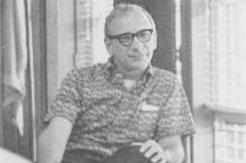
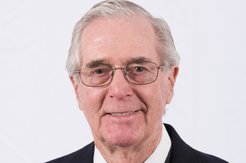
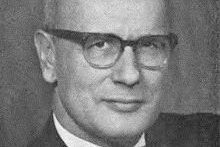
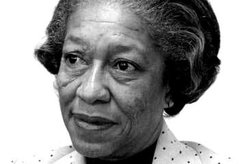
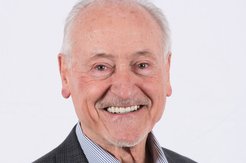
Under ACTION, wasn’t Peace renamed “Division of Overseas Operations”?
Oh yes, I remember. It was Nick Craw who wouldn’t let me have a 6th year extension so I could be a Peace Corps Director somewhere – he said I needed to have 2 years remaining out of my 5 years – I only had 1 year left. I talked with him directly in his office in July or August 1974!! I was told by someone else in July 1974 that if I had been a Republican this wouldn’t have been a problem!!
At first, The Peace Corps Act stipulated that” ….the provisions of section 1005 of that act (referring to the Foreign Service Act)
shall apply in the case of such persons, except that policy-making officials shall not be subject to that part of the section 1005 which prohibits political tests…” I am not a lawyer, but I think that means that party affliation could be a factor in making such appointments. However, I also think that changed during the Reagan administration.
What is the difference between Directors who used the Peace Corps as a resume item and the I guess hundreds of Volunteers who did exactly the same thing?
I am beginning to hear The March of Saul trailing.
And with all this musical chairs at the top, folks still joined the Peace Corps trying to do some good in the world, and some even succeeded. I started PC training in August of 1974, and by month’s end Nixon had resigned. I had the dubious distinction of serving 3 years as a PCV under 3 presidents. I’d really like to see any statistics about early terminations of PCVs during the 70s, I know it was high in my group in El Salvador.
I’ve got to laugh about the comment saying PCVs used their service to build their resume. While that’s certainly true today, back in the 70s I stopped mentioning my Peace Corps service after numerous snide remarks to the effect that now I was back from my 3 year vacation and in the “real world”.